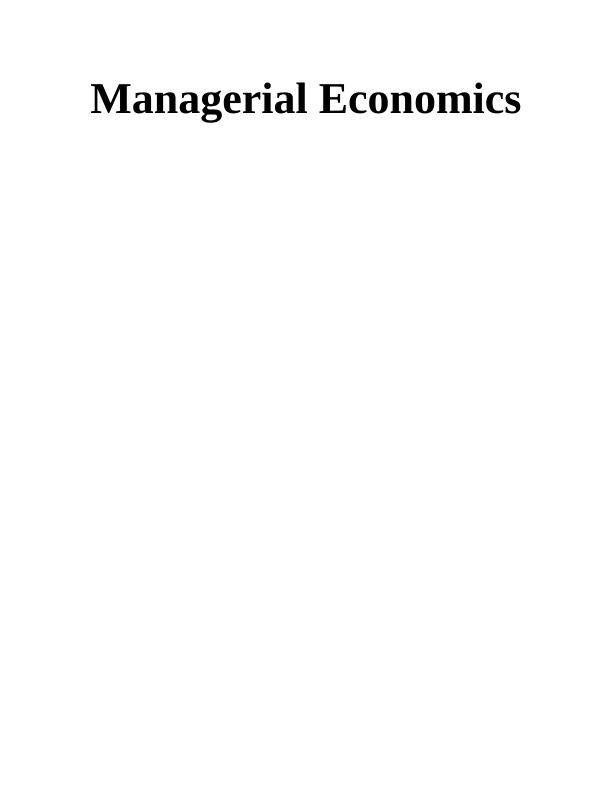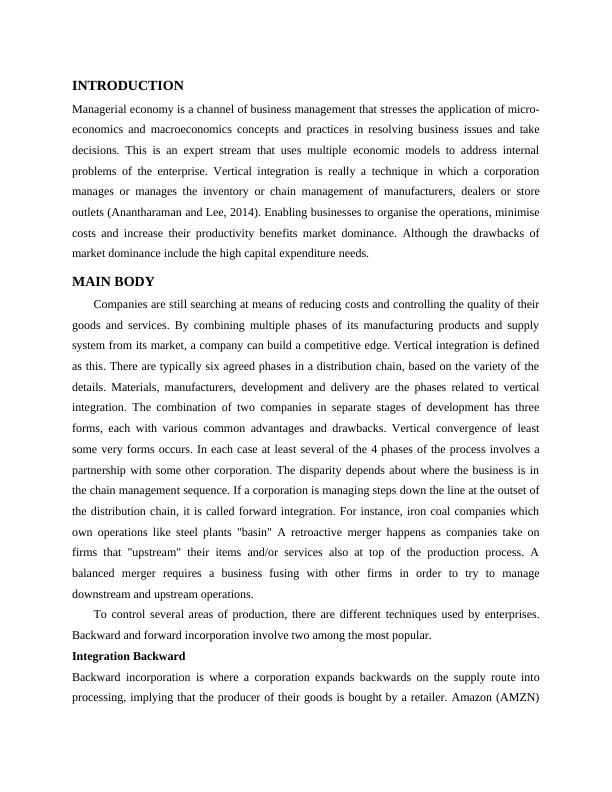Vertical Integration in Managerial Economics
Added on 2023-01-03
10 Pages3024 Words49 Views
End of preview
Want to access all the pages? Upload your documents or become a member.
Introduction to Managerial Economics
|11
|2751
|298
Logistics Management at ZARA | Study
|15
|4756
|59
Analysis of Pros and Cons of Vertical Integration in Terms of Overall Strategy
|5
|1139
|25
MANAGEMENT: Managerial economics - Desklib
|5
|1077
|13
Vertical and Horizontal Mergers as Acquisition Strategies
|8
|2146
|3
Dynamicity of a Business Environment
|5
|770
|10



